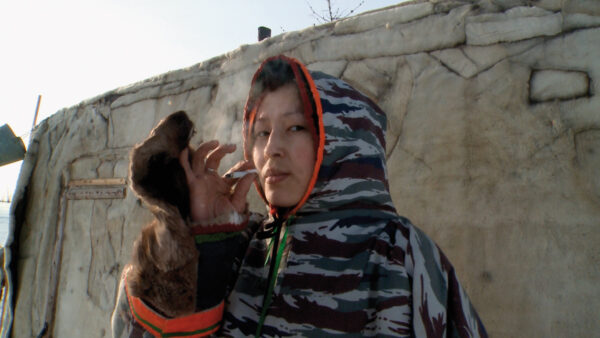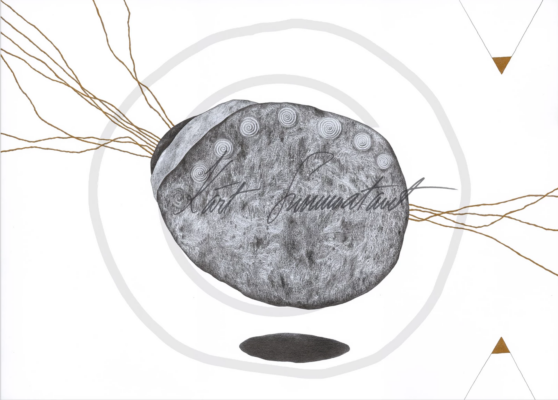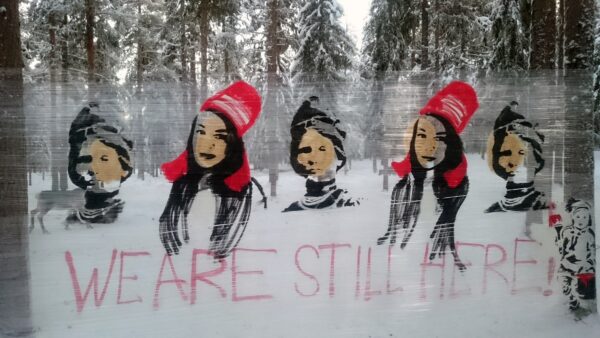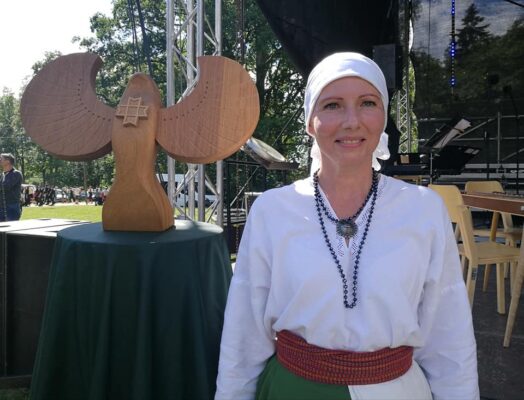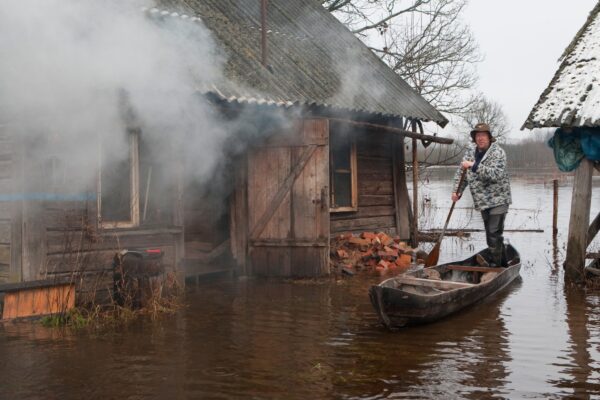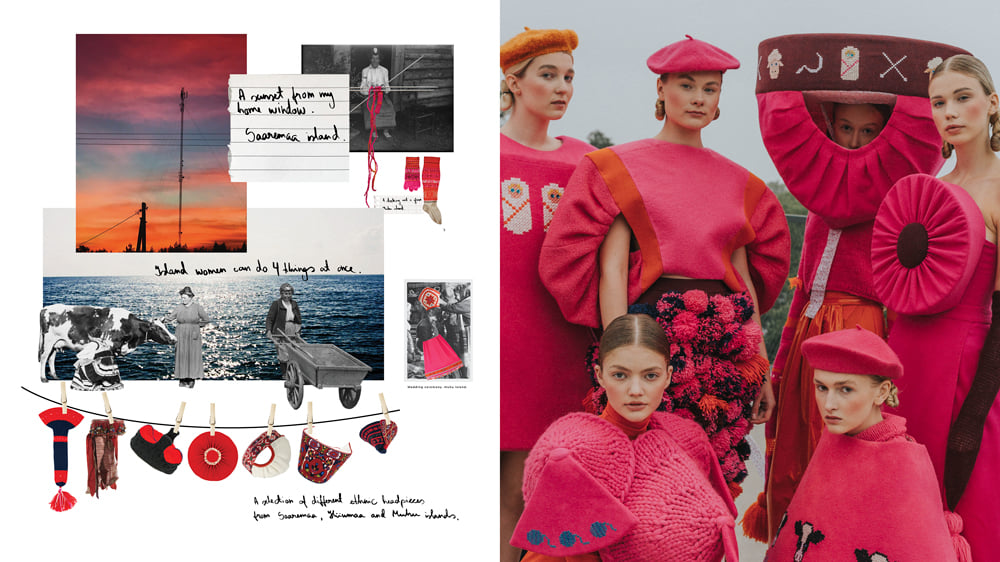
Dowry of the Future
Pärandmoe virtuaalne näitus "Tuleviku kaasavara" on avatud"!
Külastada saad nüüd ja kohe – ava vaid videoaken ja süvene!
The virtual exhibition ‘Dowry of the Future’ is a three-part digital exhibition which was created for the VIII World Congress of Finno-Ugric Peoples, introducing the extensive application of the wealth of heritage in fashion, and which is now open for a wider audience. The exhibition will showcase an overview of the ethnographic designs by the students of the Estonian Academy of Arts from the recent years as presented by professor Piret Puppart. Karl Joonas Alamaa’s installation ‘Õunapuu all – hommage hoolele’ (‘Underneath the Apple Tree – An Homage to Care’) and Lisette Sivard’s performance ‘VÖÖ’ (‘THE BELT‘) are illustrative examples of how legacies can affect being human and a creative.
The video exhibition ‘Dowry of the Future’ offers an insight into the modernisation of the cultural heritage of clothes through fashion. Besides language, clothes are one of the richest dowries we have of the past and the viable integration of its traditions and practices into the future depends on the success of its modernisation, including the attractiveness of the relevant processes.
Traditional folk clothing, a mirror to the past, has its well-established place in society, but its adjacent forms, i.e. clothing items inspired by heritage culture) have an important role to play in expanding possibilities to preserve skills and knowledge. Therefore, the seeds and sprouts sown in the search for interpretation are essential to cultural revitalisation, enabling the creation of garments enriched with an essence of local identity and pride for both the present and the future.
Piret Puppart, Head of the Department of Fashion Design of the Estonian Academy of Arts, to summarise the reasons why the exhibition was organised
The interpretation of folk dress and heritage has been ongoing in the Department of Fashion Design of the Estonian Academy of Arts since the 1940s and the experience accumulated during this time has been remarkably diverse.
Piret Puppart will provide an overview of the heritage and the revival of the culture of the ancestors in the last decade as part of the video tour. The section explains the causes, logic, and ethics of using ethnographic material as a source of inspiration and provides a number of illustrative examples to support it. The video clip is enriched by Kärt Summatavet’s editorial on the spheres of influence of heritage landscapes in modern design.
Lisette Sivard and Karl Joonas Alamaa are artists and fashion students whose work includes, in addition to exploring the past, the dissection and contesting of social and societal constructs. At the same time, the work of both young artists is centred on the universal foundations of being human, which are intercultural and age-old.
“Underneath the Apple Tree – An Homage to Care” (2020)
Karl Joonas Alamaa’s work ‘Underneath the Apple Tree – An Homage to Care’ (2020) links the ethnographic tradition, the roots of Setomaa, and the story of unconditional care and self-sacrifice handed down from the grandparents to the grandchild through a motherly prism, emphasising the importance of care and human empathy. ‘We tend to stray far from home in search of inspiration. In other words, we mistakenly think that we know enough about what goes on over here. Heritage is not just superficial beauty; it is bursting with meaning that sculpts our sense of the world,’ said Alamaa to describe his process.
“The Belt” (2019)
Lisette Sivard’s work ‘THE BELT’ (2019) is a choreographed performance about the influence of the ornament and its ability to speak to us, its lost symbolic wealth, love of labour, and this life and the afterlife. Sivard created ‘The Belt’, which focuses on movement and the human (body), by interpreting the national patterned woven belts. The centre of the performance is a performative giant seven-metre belt made of Kihnu sheep’s wool, that only comes to life along with people, whose limbs move in, on, and with the belt, thus creating ornaments. The patterns are created by the limbs of a total of eight people – a sign of how important cooperation is in the creation and conservation process. Author’s comment, ‘When I got into traditional culture, I didn’t think I could really fall in love with our heritage. Now, I sincerely consider this one of the areas with which I want to work in the future, because I have realised that the world of our ancestors is such a fertile source of inspiration and that working with it does not necessarily have to be modest and conservative. As long as we treat our ancestors with respect, we have unlimited opportunities to work with the material we have inherited.’
The World Congress, marked for the importance for the sustainability of Finno-Ugric culture, took place in Tartu for the first time this year, but remained mainly web-based due to the pandemic and political situation. The digitised exhibition is now available not only to the delegates of the congress, but also to the wider audience and offers support and tools to keep traditions alive.
Exhibition sponsored by:
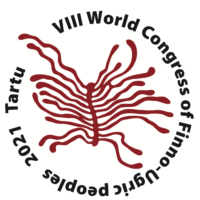
Event is part of the event series VIII World Congress of Finno-Ugric Peoples


